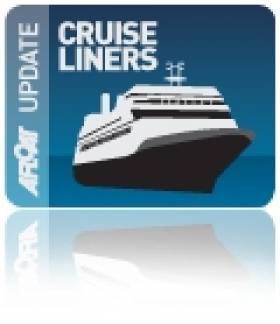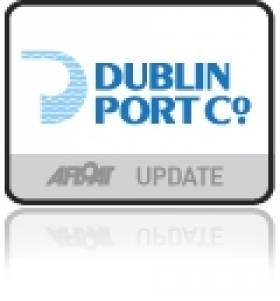Displaying items by tag: Proposed Cruise Terminal
Cruiseship Trio to Highlight Dublin Port Plans for Expansion
#CruiseDublinTrio- As previously reported on Afloat.ie, a partner has been sought by Dublin Port Company for the promotion and expansion of the cruise ship business, writes Jehan Ashmore.
Currently the port handles 110,000 annually which generate €50 million into the local economy and the popularity of the capital as a cruiseship destination continues by major cruise brand operators.
Among them will be the visit of three cruise ships next Wednesday and together they contribute to around 100 cruise calls this season, likewise to last year and an increase from 2012 when 89 ships visited.
So what cruiseships make up this forthcoming trio of callers, they are listed below. Notably the 5-star luxury sail-assisted Sea Cloud II is to set sail into the port as the first of these callers.
Sea Cloud II (2001/3,849grt) Flag: Malta Operator: Sea Cloud Cruises Passengers: 94 Crew: 65
For more details click HERE
MSC Magnifica (2010/92,128grt) Flag: Panama Operator: MSC Cruises Passengers: 2,500 Crew: 1,000 For more details click HERE
Thompson Spirit (1983/33,390grt) Flag: Malta Operator: Thompson Cruises Passengers: 1,254 Crew: 520 For more details click HERE
Despite the above cruiseships which are to berth in Alexandra Basin where the vast majority berth, the size of such vessels continues by considerably larger newbuilds. This has led to the port proposing to develop the sector by building a dedicated €200m cruiseship terminal.
Plans for the new terminal were submitted to An Bord Pleanála in March, which is to examine the largest infrastructural project planned in the port's history. The facility would accommodate the world's biggest ships and bring increased passenger numbers to 320,000 annually.
Dublin Port Company also aims to development the cruise industry by making the new terminal (closer to the city centre beside the East-Link bridge) into a hub-port or 'turnaround' destination where cruises start and finish.
This would create a whole new option for the cruise industry through fly-cruises marketed at lucrative international markets. In addition to attracting the domestic market where direct cruises to date have at best been sporadic.
#DublinCruisecalls – Dublin Port welcomed its first cruiseship caller for the 2014 season, Discovery (1971/20,135grt) a 700-passenger vessel chartered to Cruise & Maritime Voyages and she is one of around 90 visitors so far scheduled to visit, writes Jehan Ashmore.
Last year she also opened the Dublin Port cruise season which was had a record season with 100 cruise-callers. An added bonus was the 1 millionth cruise-passenger to visit the capital over the last 20 years.
The cruise passenger was on board Carnival Cruises giant 292m long Carnival Legend with more than 2,100 cruise-goers who were on a repositioning cruise from Europe to New York.
Cruise rate rowth has exceeded all expectations of the Dublin Port Company, as it was predicted that this level of cruise callers would not be realised until 2025, so the port claim they are 12 years ahead of schedule.
The dramatic surge in demand for cruising is reflected by the world's leading cruiseship industry brands among them Princess Cruises which is to see another giant the 3,082 passenger Emerald Princess (2007/113,561grt) arrive towards the end of this month.
Even larger sized cruiseships are expected to dock closer to the city-centre as part of Dublin Port's Masterplan 2012-2040, where a proposed €200m Alexandra Basin Redevelopment Project (ABR) is to include a dedicated cruise terminal completed by 2015.
The located of the proposed terminal is along North Wall Quay Extension, close to the East-Link Bridge and neighbouring O2 Theatre with its nearby tram (LUAS) connection to the city-centre.
Currently only smaller cruiseships can come up the River Liffey close to the city centre and this is dictated by the width of the East-Link toll-lift bridge and depth of water.
As for medium to large vessels they predominantly dock in Alexandra Basin's Ocean Pier and further downriver at the adjoining Alexandra Basin East which are approximately 2kms from the city centre.
To consult the cruise ships expected in Dublin Port over the season (click this link), which traditionally runs up to September, however there are further calls outside the high-season including calls beyond mid-December.






























































